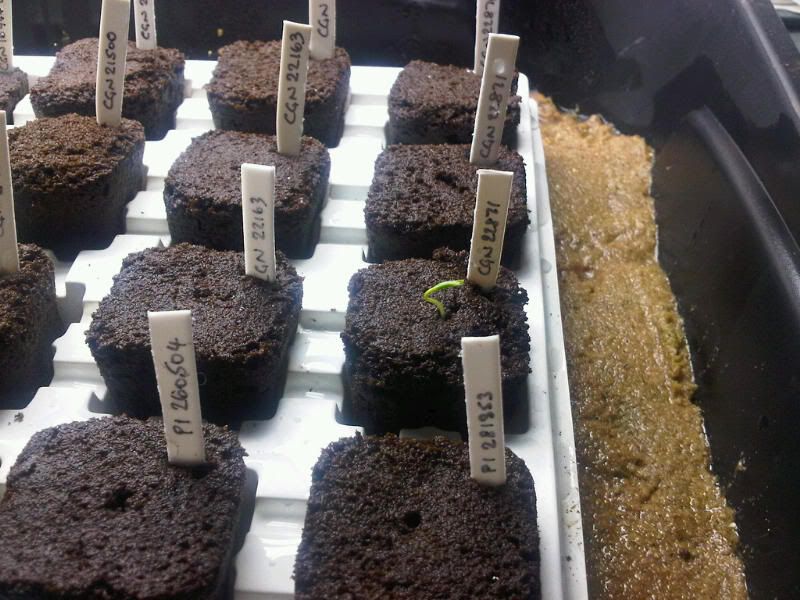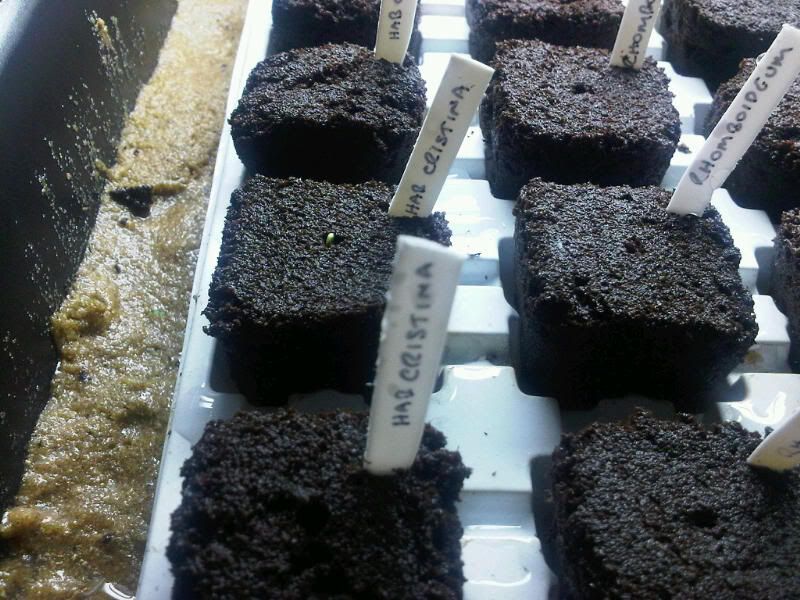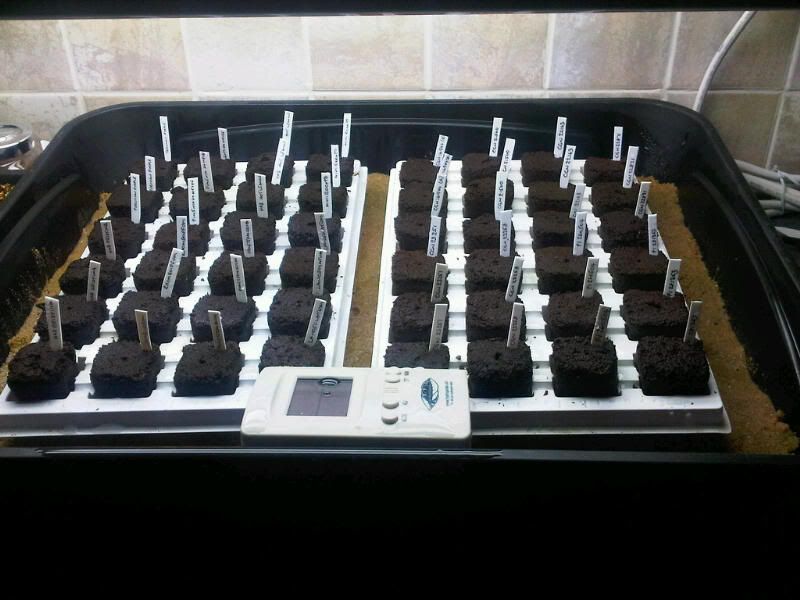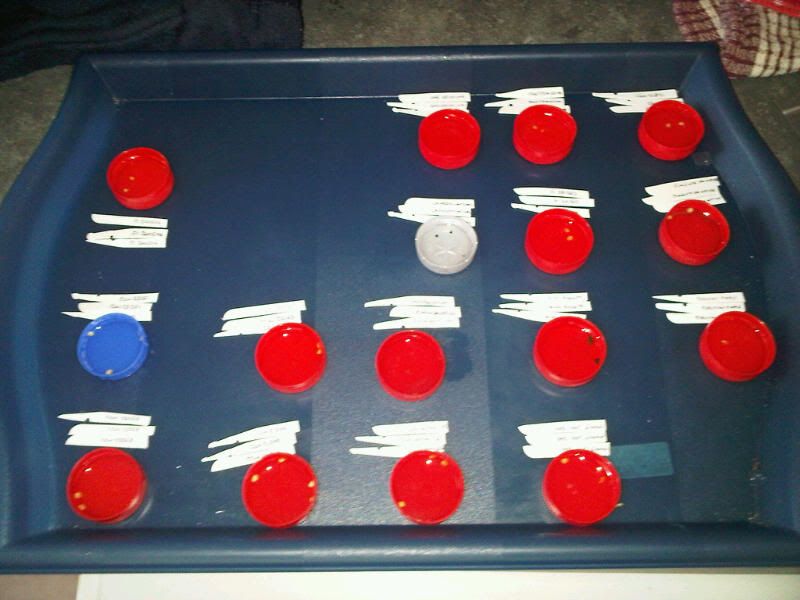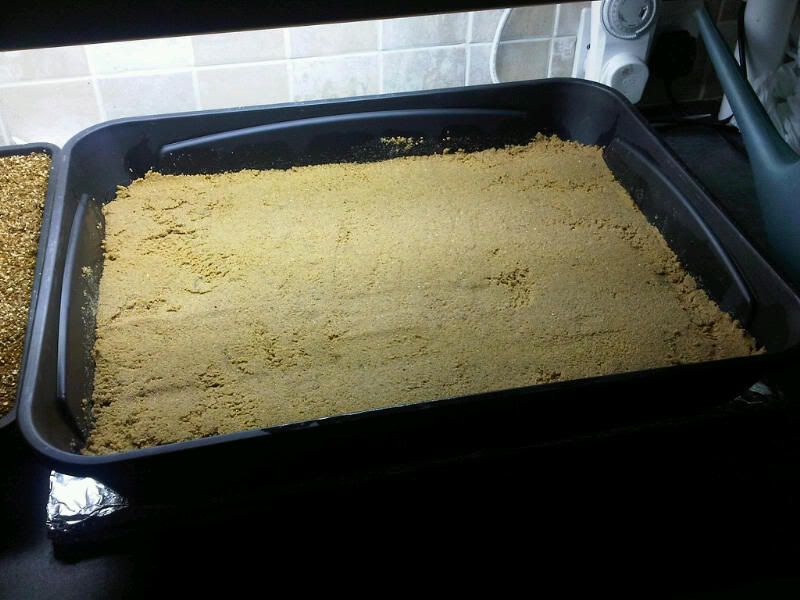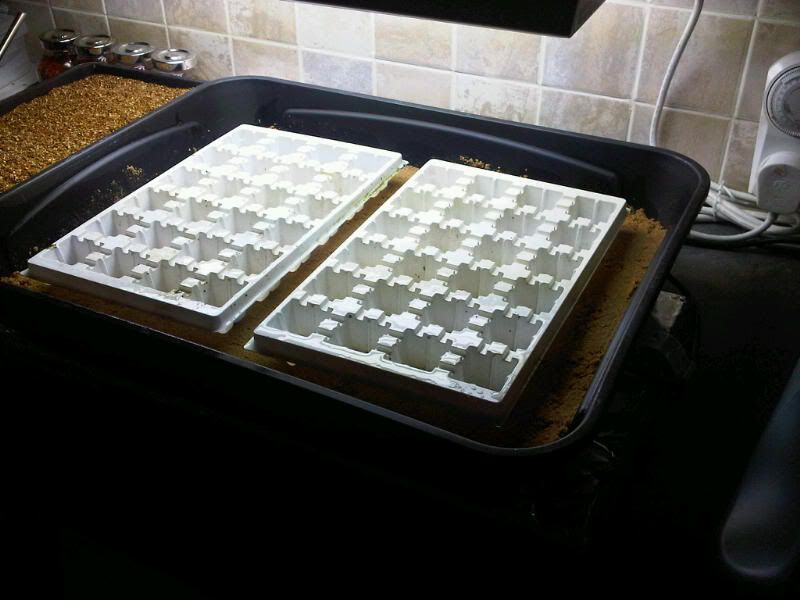A few days on and suddenly I'm up to 7 germinated seed with several more subsurface loops showing. This is usually quite an exciting time - it's actually nice to have something to see when everything else in the garden is not doing anything.
I've created a second chart on the blog that links through and shows the germination by variety. In each case I've sown three seeds, with a view to getting 2 plants of each type. Any excess will be given to good homes, so wont be wasted. I have another 4 varieties I'd like to grow that wouldn't fit in the propagator, so there might be used as a back-fill once some things get potted on.
You can see from the chart what my grow list is this year, this has to be added to my 12 over-wintering plants, so already it looks like the greenhouse will be pretty full come the summer.
Last year I focused on growing lots of superhots and habanero varieties, this year I decided to try something different and went for unusual plants, wilds and serial numbers plus a few things that caught my fancy. I will profile some of these varieties in posts in the coming weeks, although it should be pointed out that some of these varieties have limited data - so things should get interesting as the season progresses.
